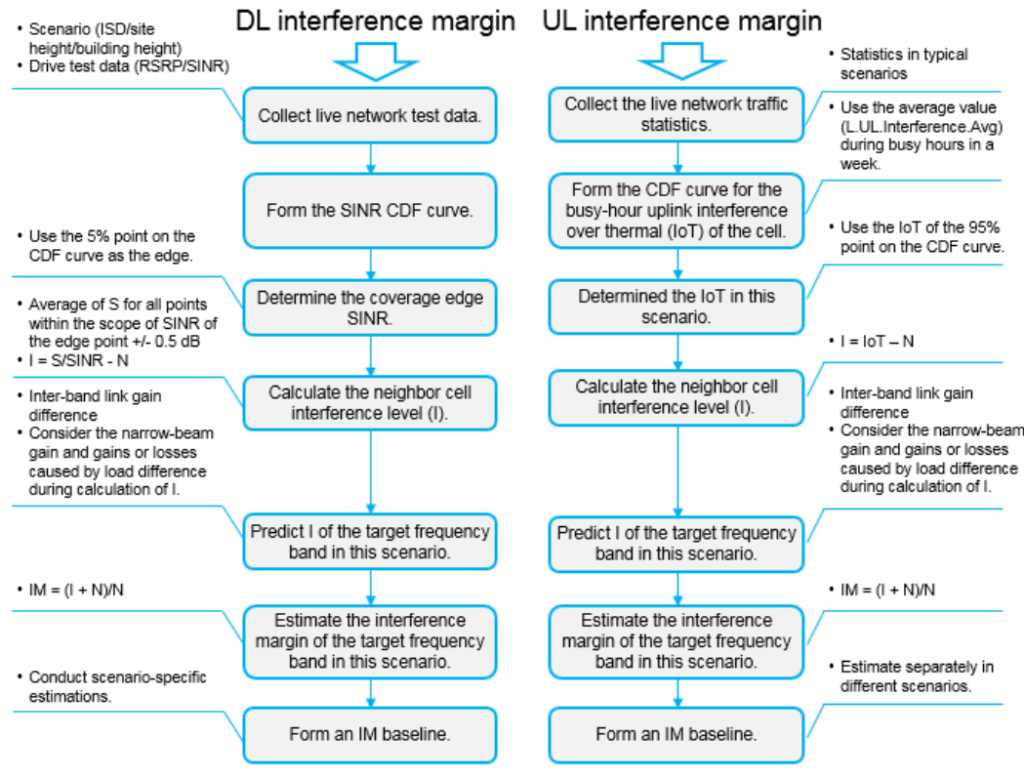Interference Margin (IM) is essential for ensuring reliable communication in wireless networks. In 5G, IM is reserved to overcome for increased noise due to interference from neighboring cells, particularly with the use of massive MIMO and beamforming technologies.
Here is formula for IM based on SINR calculation.

Methods to Obtain 5G IM
- IM Calculation Based on Network Topology: This method is still under research due to the complexity of determining neighboring cell interference in 5G.
- IM Estimation Based on Live-Network Interference Data: Recommended if live-network data is available. IM for different frequency bands can be estimated using LTE network data.
- Empirical IM Values: Used when live-network data is unavailable. Empirical values are based on historical data and experience.
IM Estimation Based on Live-Network Data
For low-frequency 5G sites co-deployed with LTE sites, IM at higher frequency bands (e.g., 3.5 GHz) can be estimated using live-network data from LTE bands (e.g., 1800 MHz). This involves analyzing traffic statistics and interference patterns from existing LTE networks to predict the IM needed for 5G deployment. Below picture shows IM estimation based on live-network interference data.

Below picture of example of IM estimation based on live-network interference data.

Picture below represents empirical values of 5G Interference margin.

Conclusion
Accurate IM calculation ensures efficient and reliable 5G network performance. Utilizing live-network data provides a practical approach to estimate IM, helping to manage interference effectively and optimize network planning.